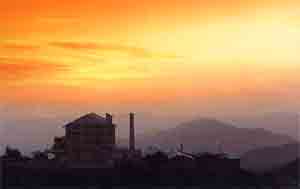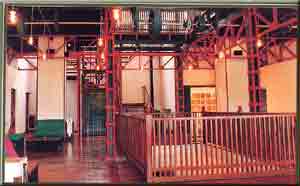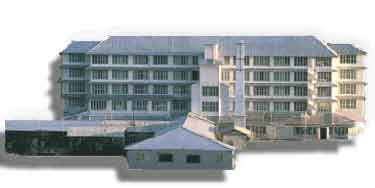|
|||||||||||
|
|||||||||||
|
|||||||||||
| The planters in charge of Hethersett during the 1940s to 1960s where personable, capable men from Britain. Gordon Windus, manager for most of the 1940', was a member of the prestigious Hiss Club in Nuwara Eliya. In May 1934, he wrote testily in the vicitors's book there: " I should like to suggest that peas from the garden instead of tinned peas are served." Windus is remembered by the Hethersett villagers for the agricultural projects he started. These included a piggery in the a vegetable farm in the jungle at Kuruwatta.
Planter John Bousefield used to surprised the labourers by working in the fields with them, pruning the tea bushes himself. It is said that the bushes he pruned yielded the most tea.
Another British planter, J. M. E. Waring , who took over at Hethersett in the late 1950s and eventually, as group manager, supervised the closing down of the factory, He owned a horse which he rode whilst inspecting the fields. He also reced this animal with a jockey, at the Nuwara Eliya race meets.
By 1968 the Hethersett tea factory had passed its heyday. Its machinery was regarded as old fashioned and uneconomical. It was the time of cost cutting and so the factory was closed. The Hethersett green leaf was sent to other factories in the Concordia group for manufacture.
For three years the factory was used as a warehouse for refuse tea. which is the fibrous reject after the manufacturing process. A few people were employed to shift the fiber and extract any remaining tea for local consumption. The residue was sold as fertiliser.
The factory finally closed in 1973, to remain as a silent monument to the grate days of pure Ceylon Tea. Its chance discovery in 1992 by Mr. G. C. Wickremasinghe was to change that. Mr. Wickremasinghe, a Director of Aitken Spence & Co. Ltd., was visiting the estates of Udapussellawa Plantations Ltd., which had recently come under their management when he spied the tea factory through the misty hills. He had a vision to transform the superbly-sited and sturdily-built factory shell into a unique, luxury hotel, an idea matched by the talent of architect Nihal Bodhinayake. Now revitalized as a hotel, the Hathersett Tea Factory is set to become as a successful in tourism as it was in top quality tea. |
|||||||||||



